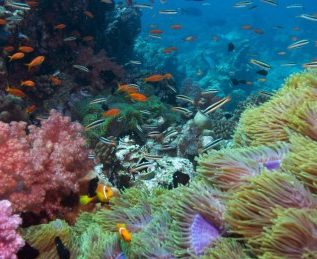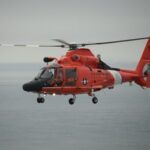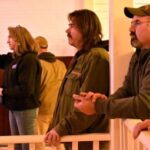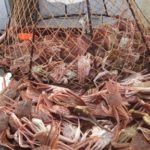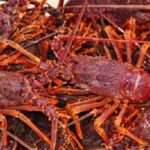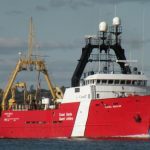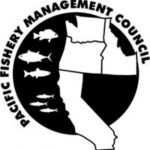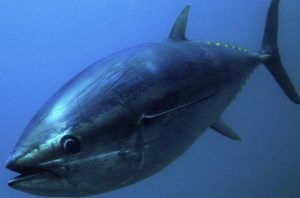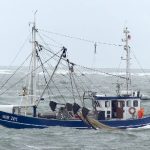Tag Archives: Russ George
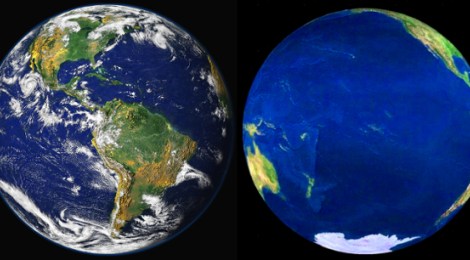
The first ever major UN Oceans Conference is underway though it is about oceans in name only.
Everything at the conference about the oceans comes within the context of the overlords of lands. Lofty statements call for more rules and with those rules more soldiers to rule over the oceans. It is as if the delegates watched nothing but swash buckling pirate movies their whole lives. Someone must speak for the oceans that need our help to restore them to historic health and abundance. If you gaze upon the two images of this planet above you will see one image shows the common view where land is prominent. The other image is more accurate as this blue planet is 72% oceans. Even of the 28% that is land barely half of that is free of ice and capable of harbouring life. June 5-9 is the UN Ocean Conference, the high-level United Nations Conference to support the implementation of Sustainable Development Goal 14: Conserve and sustainably use the oceans, seas and marine resources for sustainable development. Read the article here 22:12
Japan embraces Russ George’s scheme for iron fertilization
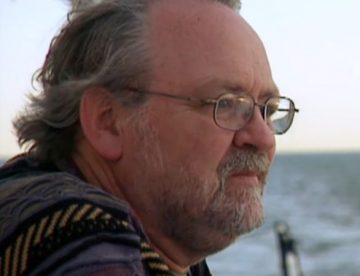 Russ George is semi-famous for dumping over 100 metric tons of iron dust, iron sulfate fertilizer and iron oxide into the sea off British Columbia, Canada in 2012. The act, he claims, spurred a plankton bloom that fed a huge surge in pink salmon returns the following year and in chum salmon returns in 2016 – the difference in years reflecting the different lifecycles of the species. The plan sought to replicate the effect of the eruption of Kasatochi volcano in the Aleutians, which also deposited iron-rich dust and spurred a plankton bloom. Sequestering carbon – in the hard shells of diatoms that sink to the ocean floor – was a supposed secondary benefit. However, George’s experiment, undertaken with the backing of a Native American (First Nations) group, the Haida in the village of Old Masset, and carried out as a corporate activity of the “Haida Salmon Restoration Corporation,” was deemed a rogue experiment. click here to read the story 15:36 click here to read “Japanese Salmon Fisheries In Historic Collapse Help On The Way” 15:40
Russ George is semi-famous for dumping over 100 metric tons of iron dust, iron sulfate fertilizer and iron oxide into the sea off British Columbia, Canada in 2012. The act, he claims, spurred a plankton bloom that fed a huge surge in pink salmon returns the following year and in chum salmon returns in 2016 – the difference in years reflecting the different lifecycles of the species. The plan sought to replicate the effect of the eruption of Kasatochi volcano in the Aleutians, which also deposited iron-rich dust and spurred a plankton bloom. Sequestering carbon – in the hard shells of diatoms that sink to the ocean floor – was a supposed secondary benefit. However, George’s experiment, undertaken with the backing of a Native American (First Nations) group, the Haida in the village of Old Masset, and carried out as a corporate activity of the “Haida Salmon Restoration Corporation,” was deemed a rogue experiment. click here to read the story 15:36 click here to read “Japanese Salmon Fisheries In Historic Collapse Help On The Way” 15:40
Ocean Pasture Plankton Collapse Cataclysmic Say German Media – Russ George responds
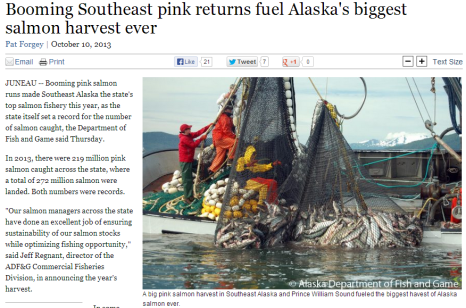 DW reports (April 2016): Food chains represent the greatest interdependency within the webs of life. The marine food chain, for instance, is essential for oceans – and depends on plankton. But environmental changes and human activities may be threatening plankton – and therefore all marine animals. (Editors note: Indeed the most favoured explanation for the collapse of plankton that make up vital ocean pastures is the impact of high and rising CO2 which at once starves the ocean of vital nutrients while acidifying ocean waters such that microscopic life, the larva of fish and shellfish as well as plankton cannot thrive. Proven Technology To The Rescue. Here’s what happens when a few tens of thousands of dollars of mineral rich dust is spread in infinitesimal amounts on a dying ocean pasture. The pasture blooms and grows an abundant crop of plankton that plankton feeds all of ocean life and in the case of my demonstration project grew hundreds of millions of additional salmon. IT JUST WORKS! Read the post here 19:35
DW reports (April 2016): Food chains represent the greatest interdependency within the webs of life. The marine food chain, for instance, is essential for oceans – and depends on plankton. But environmental changes and human activities may be threatening plankton – and therefore all marine animals. (Editors note: Indeed the most favoured explanation for the collapse of plankton that make up vital ocean pastures is the impact of high and rising CO2 which at once starves the ocean of vital nutrients while acidifying ocean waters such that microscopic life, the larva of fish and shellfish as well as plankton cannot thrive. Proven Technology To The Rescue. Here’s what happens when a few tens of thousands of dollars of mineral rich dust is spread in infinitesimal amounts on a dying ocean pasture. The pasture blooms and grows an abundant crop of plankton that plankton feeds all of ocean life and in the case of my demonstration project grew hundreds of millions of additional salmon. IT JUST WORKS! Read the post here 19:35
Record Numbers Of Salmon And Orcas Flood Pacific Coast
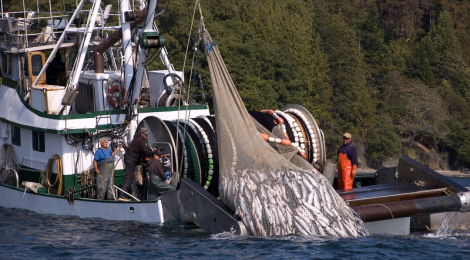 Record numbers of salmon, sockeye salmon, in never before seen abundance are swimming into the Strait of Georgia in British Columbia according to the numbers published by the Pacific Salmon Commission. The rate at which the prized sockeye are arriving is 170% of that of the previous record year of 2010 arrived more than 34 million strong. (Note: The 34 million number is the “official count,” the total number of fish returning is normally said to be 20% higher than the “official count.” Thus in 2012 upwards of 40+ million sockeye likely made it home.) Read more here 18:39
Record numbers of salmon, sockeye salmon, in never before seen abundance are swimming into the Strait of Georgia in British Columbia according to the numbers published by the Pacific Salmon Commission. The rate at which the prized sockeye are arriving is 170% of that of the previous record year of 2010 arrived more than 34 million strong. (Note: The 34 million number is the “official count,” the total number of fish returning is normally said to be 20% higher than the “official count.” Thus in 2012 upwards of 40+ million sockeye likely made it home.) Read more here 18:39
A Fresh Look at Iron, Plankton, Carbon, Salmon and Ocean Engineering
 Two years ago this month, an edge-pushing environmental entrepreneur and a company formed by a Native Canadian village set off a wave of international protest by dispersing a pink slurry of 100 tons of iron-rich dust over one of the 60-mile-wide ocean eddies that routinely drift across the salmon feeding grounds of the Gulf of Alaska. Lots of links, Read more here 14:52
Two years ago this month, an edge-pushing environmental entrepreneur and a company formed by a Native Canadian village set off a wave of international protest by dispersing a pink slurry of 100 tons of iron-rich dust over one of the 60-mile-wide ocean eddies that routinely drift across the salmon feeding grounds of the Gulf of Alaska. Lots of links, Read more here 14:52
Did Russ George’s Geoengineering experiment actually work?
 Iron seeding of the high seas was back in the news this Earth Day, 2014. Good timing – with Blue Planet in the Emergency Room and no ‘Obamacare’ equivalent to help stabilize our home – though the coverage came from a most unexpected source, The National Review. Read more here 11:20
Iron seeding of the high seas was back in the news this Earth Day, 2014. Good timing – with Blue Planet in the Emergency Room and no ‘Obamacare’ equivalent to help stabilize our home – though the coverage came from a most unexpected source, The National Review. Read more here 11:20
Haida Salmon Restoration Corporation says it has removed Russ George, Leader of B.C. ocean fertilization project
 The California businessman behind a controversial ocean fertilization project off B.C.’s west coast has been fired, but the group behind the project says it still supports the concept. Haida Salmon Restoration Corporation says it has removed Russ George as a director and terminated his employment as an officer of the Haida Gwaii-based corporation. continued
The California businessman behind a controversial ocean fertilization project off B.C.’s west coast has been fired, but the group behind the project says it still supports the concept. Haida Salmon Restoration Corporation says it has removed Russ George as a director and terminated his employment as an officer of the Haida Gwaii-based corporation. continued
Now We’re Talkin”! Iron sprinkling project by a “messing around, bumbling guy,” spawned the growth of enormous amounts of plankton. NOAA provided 20 instrument-laden buoys, Claims the agency had been “misled”.
I love this! The scientific community and the econuts are OUTRAGED! Outraged I tell ya! You tell me what you think. Leave a comment.
A California businessman chartered a fishing boat in July, loaded it with 100 tons of iron dust and cruised through Pacific waters off western Canada, spewing his cargo into the sea in an ecological experiment that has outraged scientists and government officials. The entrepreneur, whose foray came to light only this week, even duped the National Oceanic and Atmospheric Administration in the United States into lending him ocean-monitoring buoys for the project. The iron spawned the growth of enormous amounts of plankton, which Mr. George, a former fisheries and forestry worker, said might allow the project to meet one of its goals: aiding the recovery of the local salmon fishery for the native Haida.







